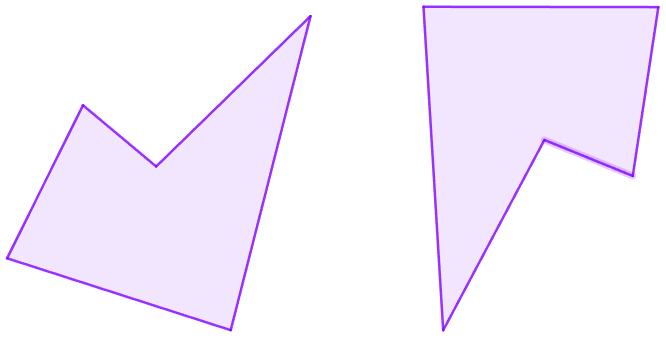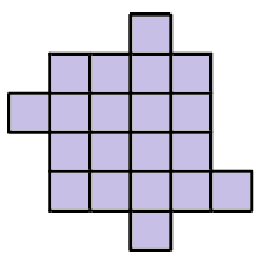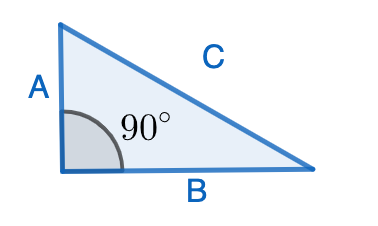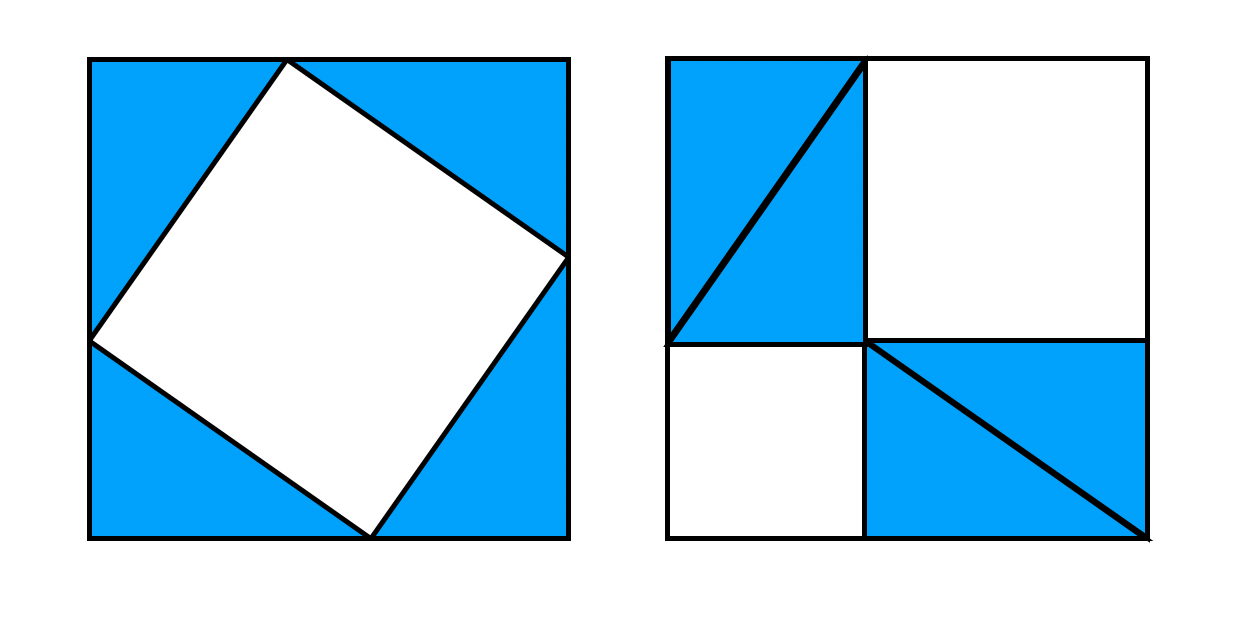Problems
Fred and George each had a square cake. Both of them made two straight cuts across their cake, from edge to edge. How could it happen that Fred ended up with three pieces, while George ended up with four?
Remember that two shapes are congruent if they are the same in shape and size, even if one is flipped or turned around. For example, here are two congruent shapes:

Cut the following shape into four congruent figures:

A cube net is a 2D shape that can be folded into a cube. For example, in the following diagram we show a cube net and the steps that fold it into a cube:

Imagine that you want to cover an endless floor with this cube net, so there are no gaps or overlaps, how would you lay them out? This is called covering or tiling the plane.
Cut a square into three parts and then use these three pieces to form a triangle such that:
All its angles are acute (i.e: less than \(90^\circ\)).
All its sides are of different lengths.
Jamie has a bag full of cards, where each card has a whole number written on it. How many cards must Jamie take from the bag to be certain that, among the cards chosen, there are at least two numbers whose average is also a whole number? Recall that to calculate the average of two numbers, we add them together and then divide by two.
Long before meeting Snow White, the seven dwarves lived in seven different mines. There is an underground tunnel connecting any two mines. All tunnels were separate, so you could not start in one tunnel and somehow end up in another. Is it possible to walk through every tunnel exactly once without retracing your path?
The Pythagorean Theorem is one of the most important facts about geometry. It says that if we have a right-angled triangle (i.e: it has an angle of \(90^\circ\)), whose longest side measures \(C\), and its other two other sides measure \(A\) and \(B\):

then \(A^2+B^2=C^2\). There are many proofs of this fact, and some involve dissections! Let’s have a look at the following two ways to dissect the same square:

Can you explain how these dissections prove the Pythagorean Theorem?
Seven Smurfs live in seven mushroom houses. There is a tunnel between every pair of houses, so from any house you can walk to any other house. One of the Smurfs, Clumsy, starts walking from his house, but he must not use the same tunnel more than once. He keeps walking until he reaches a house where all the tunnels have already been used. Where will Clumsy’s journey end?
Without using any wolves, show that Robinson’s goat can only graze shapes that are convex (that means, whenever you pick two points inside the shape, the whole line between them also lies inside). But if Robinson is allowed to use as many wolves as he likes, this restriction disappears. Show that in this case, he can make the goat graze in the shape of any polygon at all.
In a field, there are two pegs, \(A\) and \(B\), placed \(15\) metres apart. Each peg has a small
ring on top, and a rope can slide freely through these rings.
You have one rope and two goats that want to graze the grass, but they
will fight each other if they can both reach the same spot.
The rope may be arranged in any way you choose: it could pass through
both rings, only one, or neither, depending on your setup.
For what lengths of rope can you arrange things so that the goats cannot
fight each other?